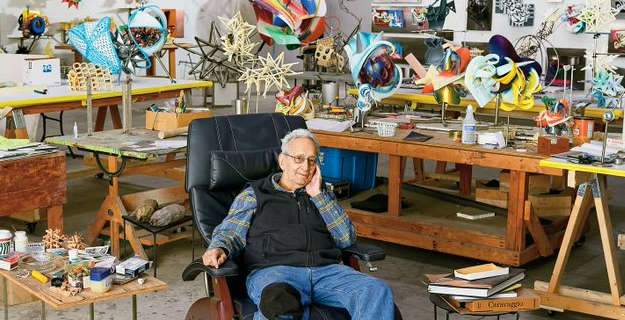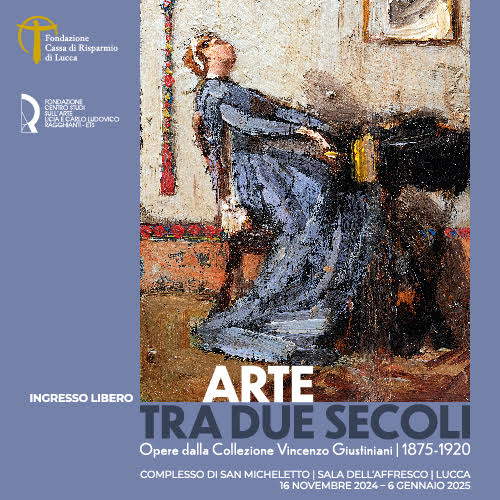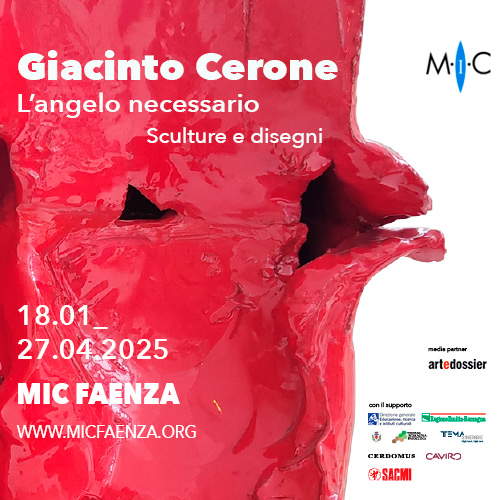Farewell to Frank Stella, the artist who redefined abstract art
One of the greatest artists of recent times, American Frank Stella, whose work helped redefine the terms ofabstract art, passed away Saturday at the age of 87. According to the New York Times, Stella was battling lymphoma,
Born in 1936 in Malden, Massachusetts, Frank Stella was precocious in absorbing a passion for art from his family, particularly his mother, an amateur artist who attended a design school. Between 1950 and 1954, he attended Phillips Academy in Andover, where he participated in Patrick Morgan’s classes and studied painting and art history with Carl Andre. In 1958, he completed his studies at Princeton University, majoring in history. During his academic journey, he had the opportunity to meet Michael Fried and take courses taught by William Seitz and Stephen Greene, as well as explore museums and art galleries in New York. Also in 1958, seeing Jasper Johns’ flag paintings at the Leo Castelli Gallery in New York struck him deeply, as he considered them a suitable form of artistic expression. Soon after, he started the Black Paintings series and accepted an invitation to participate in the Sixteen Americans exhibition at MoMA, at Castelli’s urging. The exhibition was curated by Dorothy Miller, who had discovered him through the Tibor de Nagy Gallery. During the planning of this exhibition, Miller visited Stella’s studio with Leo Castelli. The Black Paintings were introduced in the exhibition catalog by Carl Andre. At the same time, he participated in the exhibition Three Young Americans at the Allen Memorial Art Museum at Oberlin College, Ohio. In August 1959, he joined the circle of artists represented by Leo Castelli.
During 1960, the Leo Castelli Gallery in New York hosted an exhibition focusing on Stella. During his first months in New York, he worked as a painter three or four days a week, using inexpensive pigments that he bought in Essex Street workshops. In 1961, together with Sidney Guberman, he visited Frank Lloyd Wright’s buildings in Florida and traveled in Europe, visiting Britain, Spain and France, as well as immersing himself in the cultures of Morocco. In London that same year, he married art critic Barbara Rose. In 1969, the couple separated after having two children, Rachel and Michael Stella. In February 1962, Stella returned to America.
In 1964, he was included, along with other young artists, in the XXXII Venice Biennale by Alan Solomon, director of the Jewish Museum in New York. During the 1960s and 1970s, Stella traveled to Brazil, participated in art events such as Rauschenberg’s performance “Open Score” in 1966 and the symposium “The current moment in art” in 1966. In January 1967, she moved to Irvine, California, as a resident artist at the University of California. In the summer of that year, he taught painting at a summer workshop at the University of Saskatchewan in Regina, Canada. Also in 1967, he won first prize at the Painting Biennial in Tokyo. He also began a long collaboration with printmaker Kenneth Tyler, who produced some 400 print editions.
Stella counts himself among the artists who responded to the spread ofabstract expressionism in the post-World War II period. His essential paintings, a response to that movement, were particularly bold, devoid of color and conceived without the intention of visually stimulating the viewer. As he told minimalist sculptor Donald Judd, describing his own work, “What you see is what you see”-Stella’s “Black Paintings” remain among his most celebrated works. Using primarily a black palette, Stella divided her large empty surfaces with white lines applied using geometric patterns. With their mathematical logic and precise brushwork, these paintings marked a clear break with abstract expressionism, which favored artistic originality and grand statements about human nature. In contrast, the Black Paintings seemed intentionally meaningless. They were provocative not only because of their difference from the artistic conventions of the time, but also because of their refusal to communicate explicitly.
The Black Paintings may have seemed daring for the time, but Stella continued to experiment throughout her career. She began to use aluminum paint, which was uncommon in art and most commonly associated with the coating of radiators. Stella claimed he chose it for its affordability and availability. During his last months at Princeton, he created compositions based on bands or stripes, a bridge to the Black Paintings series and a distance from earlier abstract expressionism. In New York, he began the Black Paintings series in late 1958, focusing on each individual work without an overall view. The series is divided into two groups, characterized by the parallel lines and their arrangement on the canvas. The expressiveness of the paintings lies in the size, the width of the bands and the type of paint used.
Among the awards obtained are the Award for Arts and Culture obtained in 1981 by the mayor of New York, the residency, between 1983 and 1983, of the American Academy in Rome, and then again in 2001 the Gold Medal of the National Arts Club and, in 2009, the National Medal of Arts presented to Stella by then U.S. President Barack Obama.
“A giant of postwar abstract art,” said New York’s Marianne Boesky Gallery , which represents the artist, “Stella’s extraordinary, ever-evolving oeuvre investigated the formal and narrative possibilities of geometry and color and the boundaries between painting and objectivity.”
 |
| Farewell to Frank Stella, the artist who redefined abstract art |
Warning: the translation into English of the original Italian article was created using automatic tools. We undertake to review all articles, but we do not guarantee the total absence of inaccuracies in the translation due to the program. You can find the original by clicking on the ITA button. If you find any mistake,please contact us.





























